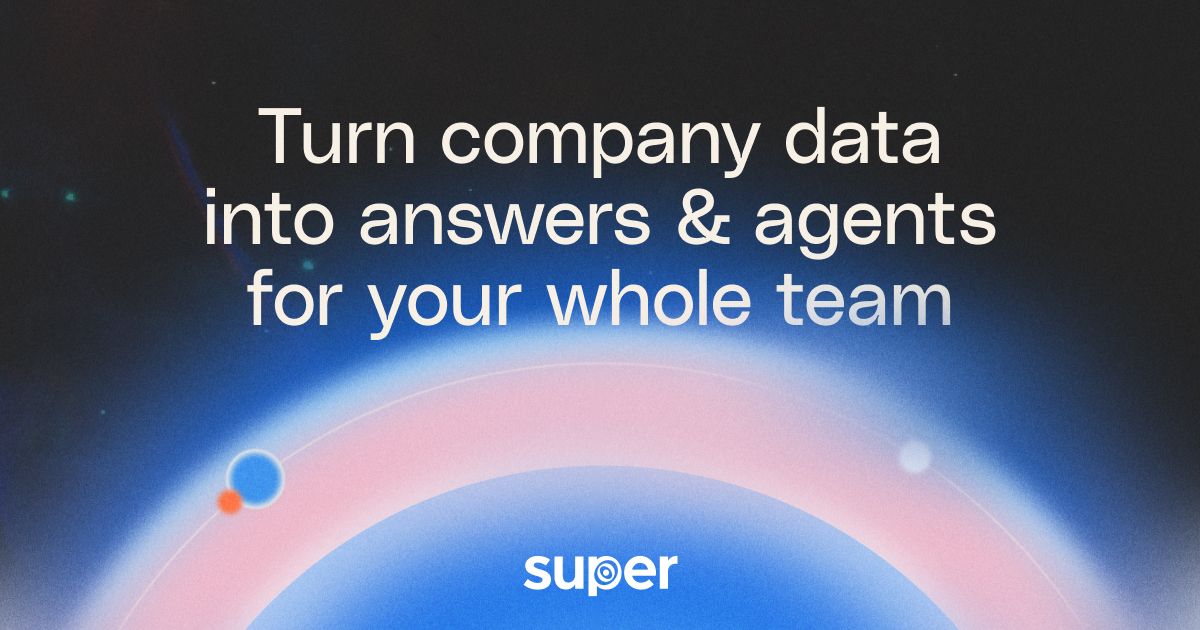So you want to build an enterprise search
Companies want to talk to all their apps in one place. With MCPs, it seems simple and easy. But is it?

Back in the early days of tech, companies built everything themselves. Databases, operating systems, even their own email servers. It was a badge of honor to roll your own. But as the world got more complex, the build-everything mindset started to crack. Today, one of the toughest decisions for any organization looking to implement enterprise search is whether to build it in-house or buy a ready-made solution. It’s a classic dilemma, and like most things in tech, the answer isn’t one-size-fits-all. It depends on your resources, your priorities, and how much pain you’re willing to endure.
Let’s break it down.
The Trade-offs
Building your own enterprise search sounds appealing. You get total control. You can tailor it to your exact needs, integrate it perfectly with your stack, and avoid vendor lock-in. But control comes at a cost. Building a search system that’s fast, reliable, and scales isn’t like slapping together a CRUD app. It’s a beast.
You need engineers who live and breathe search—people who understand inverted indices, relevance tuning, and query parsing. Those folks are rare, and they’re not cheap. Even if you have them, you’re pulling your best talent away from your core business to work on what’s essentially an internal tool. And it’s not just a one-time effort. Search systems need constant maintenance. APIs change, data sources evolve, and users always want better results. A year to build the first version? That’s optimistic. Add another year or two before it’s actually good.
Buying, on the other hand, flips the script. You get a solution that’s ready to go, often with pre-built connectors to tools like Slack, Google Drive, Notion, or JIRA. Implementation can take weeks, not years. Vendors bring expertise you don’t have to grow in-house, and they handle the messy stuff like scaling and security. But it’s not perfect. You’re at the mercy of their roadmap, their pricing, and their ability to integrate with your weird, one-off systems. And no matter how good the vendor, you’ll still need to think hard about security—especially if your data is sensitive.
When to Build
Building makes sense in a few rare cases. If you’re a massive organization like NVIDIA, with armies of engineers and highly specialized needs, you might have the muscle to pull it off. Or if your requirements are so unique that no vendor can touch them, you’ve got no choice. But even then, you need to ask: do you have the expertise? Can you afford to tie up your best people for years? Are you ready to maintain this thing as your company grows and your data sources multiply?
Most companies don’t check these boxes. They think they do—90% of organizations try building their own search before giving up and buying—but reality hits hard. Collecting data from a dozen apps, keeping connections alive as APIs change, and building a system that scales with millions of documents is tougher than it looks. And don’t forget security. Implementing fine-grained access controls and respecting permissions across all your tools? That’s a project in itself.
When to Buy
For most companies, buying is the smarter move. If you need to search across modern tools—Slack, Drive, Linear, Confluence—vendors have you covered with integrations that just work. Want a system that understands context, respects access controls, and doesn’t require a PhD to maintain? That’s what enterprise search solutions are built for. They’re not cheap—subscription pricing can sting, especially if you’re indexing a ton of data—but they’re almost always cheaper than the true cost of building, which includes not just salaries but the opportunity cost of diverting your team from your actual product.
Buying also gets you speed. You can have a working system in weeks, not years. And as your company grows, enterprise solutions are designed to scale without you needing to reinvent the wheel. Sure, you’ll still need to do some work—assessing your needs, integrating data sources, tuning the index, and training your team—but it’s a fraction of the effort compared to building from scratch.
The Process
Whether you build or buy, the steps are roughly the same. First, figure out what you need: what data sources, what kind of queries, what security requirements. Then, if you’re buying, evaluate vendors based on features, pricing, and scalability. If you’re building, brace yourself for a long road. Either way, you’ll need to deploy (cloud or on-prem), connect your data sources, build and tune the index, design a user interface, test the system, and roll it out to your team. The difference is that buying compresses the timeline and offloads most of the heavy lifting.
The Market Reality
Here’s a sobering stat: 90% of companies that try building their own enterprise search end up buying one anyway. Why? Because they underestimate the complexity. Search seems simple—type a query, get results—but under the hood, it’s a tangle of trade-offs between speed, relevance, and scale. Most organizations don’t have the time, money, or expertise to get it right.
The Bottom Line
If you’re a small or medium-sized company, or even a large one without deep search expertise, buying an enterprise search solution is almost always the better call. You get speed, scalability, and features that would take years to replicate. Building only makes sense if you have very specific needs and the resources to match—think Google-scale problems with Google-scale talent.
But don’t just take my word for it. Talk to your team. Look at your budget, your timeline, and your engineering bandwidth. Then ask yourself: is building this really the hill you want to die on? For most companies, the answer is no. And that’s not a failure—it’s just good business.

Ishaan Gupta
Ishaan Gupta is a writer at Slite. He doom scrolls for research and geeks out on all things creativity. Send him nice Substack articles to be on his good side.
Ready to supercharge your workflow?
Connect your tools and start getting instant answers.
We've been building solutions for knowledge sharing and better work since 2016.